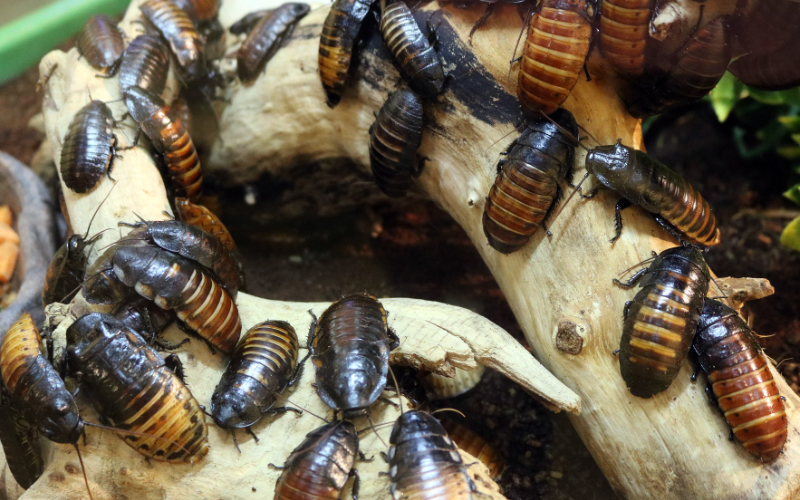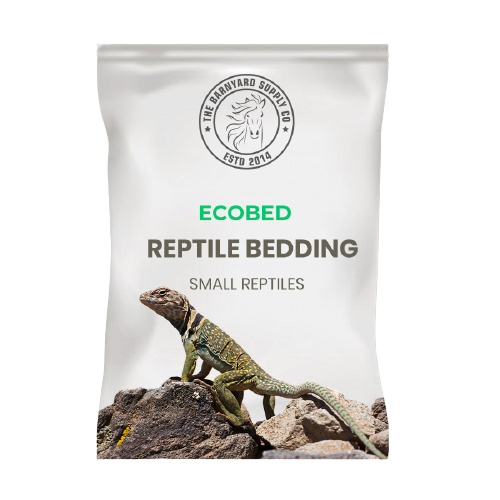The basilisk is a lizard native to tropical Central America that is long and thin. It’s usually green or green/blue in colour, with dark stripes running down the back of the tail and across the top of the abdomen. Males of the species are larger and have huge plumes on their heads, along their spines, and down their tails.
The basilisk will spend the most of its time in or among trees that are located over or near sources of water. When threatened, it may rear up on two legs and sprint exceedingly fast by utilising its tail to keep itself stable. To evade predators, the basilisk can even dive into water. Among the most intriguing features of this lizard is that it has hydrophobic scales on the underside of its feet, allowing it to run over water for brief periods of time. The lizard earned the moniker “Jesus Christ” as a result of this.
Appearance and Behaviour
Basilisks have a dazzling electric green body with light-blue, white, or grey markings as well as darker stripes. The basilisk’s belly is generally a lighter green than the rest of its body, creating a striking contrast.

Their stability is aided by their broad extremities. They are usually brownish or green, but they can also be vivid green, olive-brown, or tan. Their hybrid lines are duller, and their jaws and parallel strips are cream to yellowish. Newborn pigmentation is comparable to that of adults, except it is often more defined, and they have three lengthwise borders on the neck. The eyes of all generation species are rusty to tan in colour. While climbing, they have extended fingers with sharp studs. Males have larger combs than females, which are supported by growing sensory backbones that include a circular or spiky cranial, rear, and posterior comb.
The average length of a fully grown basilisk is between 24 and 36 inches. A female, which is always somewhat smaller than a male, can reach a height of 18-24′′. The tail is responsible for the majority of the length. The average lifespan of a basilisk is eight to 10 years.
What basking temperatures do basilisks need?
A basking area temperature of 90-95°F and a cool side temperature of 75-80°F are required for basilisks. The temperature in the enclosure should be kept between 80 and 85 degrees Fahrenheit. Digital probe thermometers should be used to measure temperatures, with probes positioned on the basking spot and the floor on the cool side.
A thick, solid wood branch positioned towards the top should serve as the basking surface. Provide heat by placing a cluster of halogen heat lights on one side of the enclosure to resemble the sun. You’ll need enough lamps to heat an area the size of the lizard’s body evenly. Heat mats, red bulbs, and blue bulbs are ineffective and should be avoided.
The temperature should not drop below 75°F at night. To maintain the minimum air temperature, a lightless heat source, such as a radiant heat panel, can be utilized.
What humidity levels do basilisks need?
Basilisks need a humidity level of 50 to 80 percent. This can be maintained by spraying the vivarium with warm water on a daily basis. If your budget allows, you can purchase a mister or fogger to perform the work for you.
What do Basilisks eat?
Basilisks are omnivorous, which means they need to eat both animal and plant-based diets to receive enough nutrients. They are known to eat tiny creatures like lizards, snakes, fish, rodents, birds, and frogs, as well as fruit and certain fresh greens, despite their preference for insects. Depending on their age, they require different amounts of food:
- Hatchlings ( < 3 months old): Insects daily
- Juveniles ( < 16” long): Insects and salad every other day
- Subadults and adults ( > 16” long): Insects every 3-5 days, salad daily
Provide as much food variety as possible for a healthy, happy, colourful basilisk!
Crickets, discoid roaches, dubia roaches, earthworms, grasshoppers, hornworms, silkworms, mealworms, superworms, snails (captive-bred exclusively), pinkie/fuzzy mice, entire fish, chicks, feeder anoles are all good protein sources for basilisks.

Collard greens, cactus pads, spring mix, arugula, kale, alfalfa, bok choy, carrot greens, spinach, dandelion greens/flowers, hibiscus greens/flowers are also good selections for basilisks.

Fruit should only be consumed as a treat due to its high sugar content. Berries, mango, cantaloupe, and papaya are among the fruits available.
Do basilisks like to be handled?
These lizards are often hesitant to be handled. This is especially true for people who have been caught in the wild. When confronted, they frequently snap or flee and begin leaping from the room’s surfaces, which can indicate wounds and nervousness. These lizards are a secondary alternative if you’re looking for a peaceful and well-managed reptile.
If you intend to touch your Basilisk, you can try to gradually build a connection with the creature. Test feeding a few meals with a pair of tweezers; once they start eating from the tongs, see if they will eat from your palm.
You can begin slowly pulling them up without restricting them once they associate you as the pleasant owner who supplies them; make this close to the area so they don’t damage themselves if they fall off. After nearly a year of building confidence, you’ll notice a major change in their personalities.
Cleaning
To keep your surroundings healthy, do a regular spot clean to catch any excrement or uneaten food. A thorough cleaning should be performed once a month. This entails taking down all decorations as well as the substrate. Clean with a reptile-safe disinfectant and a paper towel. In the same way, you can clean your decorations. Before putting them back in the enclosure, make sure they’re completely dry.
Cleaning should be done during the day so that your lizard can return to the vivarium for at least an hour before the temperature drops for the night.
How much space do green basilisks need?
Basilisks are native to a tropical climate, thus they suffer in the UK’s colder climate and require heating and illumination to survive. We recommend keeping a basilisk in a hardwood vivarium to help maintain temperatures stable and shield against the cold. For an adult, we recommend an enclosure that is as near to 4 x 2 x 3ft as possible due to the temperature gradient required for this species.
When choosing a vivarium, look for one with plenty of huge vents and glass sliding front doors. All of this ventilation should prevent heat from escaping from one side of the enclosure to the other while maintaining a steady temperature in the basking region.
In wide open spaces, young basilisks may feel vulnerable and terrified, so make sure there are plenty of decorations. As the basilisk grows in size and becomes accustomed to its surroundings, these can be removed, giving it more room to roam around and bask within the enclosure.
What substrate is good for basilisks?
The substrate should be soil, soil mixtures, leaf litter, or bark wood chips to keep the environment at the proper humidity level. If you want to make a bio-active enclosure, use a nutrient-dense soil mix and add a drainage layer beneath your substrate. For this lizard, coconut husk is an excellent choice. Calcium sand can also be used.
Coconut Husk
Coconut husks or chips are one of the safest and most effective reptile bedding solutions. It is one to know because it is soft, pleasant, absorbent, and wonderfully aerated. Its absorbency keeps the odour intact, holds moisture for longer, and keeps the room at a comfortable temperature. You can make use of it according to your needs. Coconut bedding is simple to clean and store, as well as being non-allergenic, biodegradable, reusable, and recyclable.
Calcium Sand
Calcium sand is one of the most attractive surfaces for lizards. Pool sand is a wonderful choice because it is usually cleaner than playground sand. These sands give the terrarium a truly desert feel, and they’re usually easy to keep clean. This sand can be found in a variety of colours. They’re formed of calcium and have a look and feel that’s extremely close to genuine sand. This material encourages basilisk natural digging inclinations while also retaining heat within the habitat.
Soil Mixture
Soil Mixture is a soil-like substrate manufactured from a unique combination of peat moss, soil, sand, and carbon that provides the ideal environment for live-planted realistic or bioactive tropical terrariums. It encourages natural activities like burrowing and egg-laying since it mimics the soil found in tropical reptiles’ natural habitats. It’s also possible to add more sand to make it ideal for desert setups!
Basilisk potential health issue
Even if you’re providing care for your lizard, you should always be on the lookout for disease.
- Parasites-
Internal parasites like roundworm and hookworm can be very harmful to reptiles. Contact with another diseased reptile, contaminated objects, or infected food can cause a captive lizard to become parasitized. Lack of appetite and weight loss, regurgitation of meals, changes in behaviour, and loose stool or diarrhoea are all signs of a parasite infection. Make sure the vivarium is clean on a regular basis to avoid parasitic infestation.
- Metabolic Bone Disease-
Lack of UVB lighting is a common reason. Reptiles are unable to convert calcium without vitamin D3, and they are unable to generate vitamin D3 without adequate UVB illumination. A UVB bulb that covers half to two-thirds of the vivarium will suffice.
- Vitamin A deficiency-
Vitamin A is obtained from a number of plants in the wild, but it is more difficult to obtain in captivity. Vitamin A is essential for preserving strong vision. Vitamin A is found in most reptile supplement powders and can also be purchased separately.
- Rostral (nose) Injuries-
The behaviour of nose banging is common in agitated lizards. They dash about the vivarium, slamming their noses against the walls. Open wounds are common and can become infected quickly.
Conclusion
Basilisks can make excellent pets after you are familiar with their basic maintenance and temperament. They may not be the most cuddly of pets, but they are fascinating to watch and have a lengthy lifespan.
Reptile petting is one such occasion habit seen in rarity, for you to raise them in full conscience need as much information as possible, read more for a complete guide on each pet to wish to raise.





